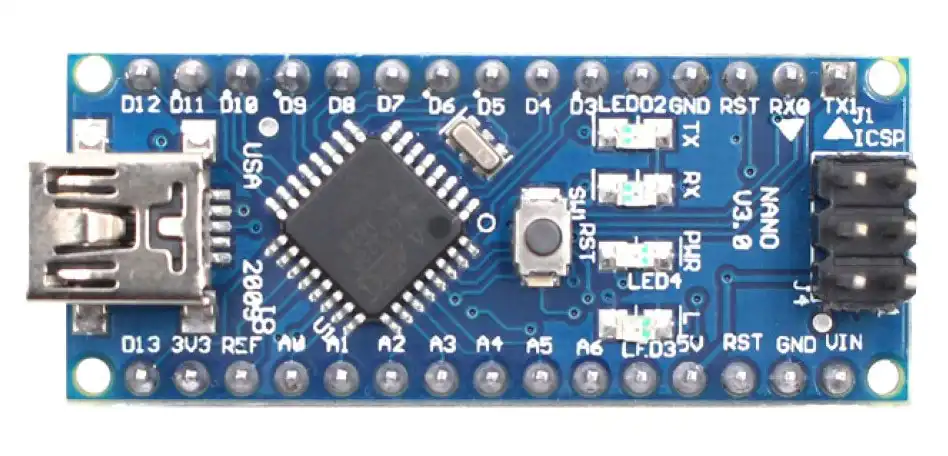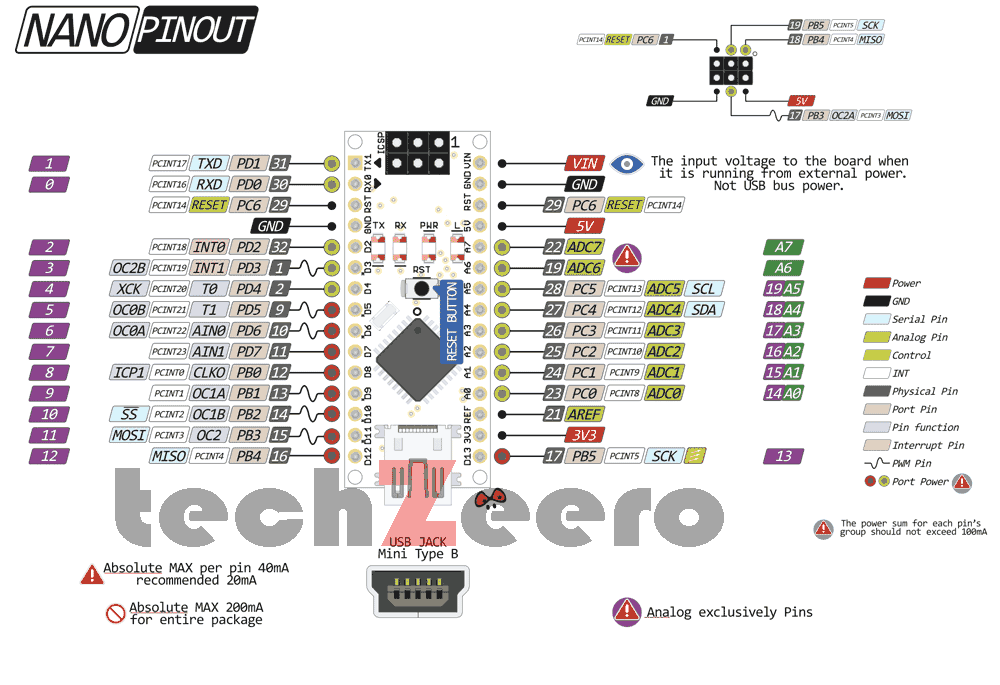The Arduino Nano is a small and compact board than Arduino UNO. It is based on Atmega328P.
It is small in size than Arduino Uno but has the same functionality.
Due to small in size, it has a lack of Power Jack.
The USB Connection is different from Arduino UNO. It has a mini-B USB Connection port.
The board has 14 digital pins that can be used as input/output. From that 14 digital pins, 6 pins can be used as PWM outputs.

Arduino Nano Pinout

Technical Specification
| Microcontroller | ATmega328 |
| Operating Voltage | 5 V |
| Flash Memory | 32 KB of which 2 KB used by bootloader |
| SRAM | 2 KB |
| Clock Speed | 16 MHz |
| Digital I/O Pins | 14 (6 of which are PWM) |
| Analog IN Pins | 8 |
| EEPROM | 1 KB |
| DC Current per I/O Pins | 40 mA (I/O Pins) |
| Input Voltage | 7-12 V |
| PWM Output | 6 |
| Power Consumption | 19 mA |
| PCB Size | 18 x 45 mm |
| Weight | 7 g |
- Vin:- The input voltage to the Arduino board when it’s using an external power source you can supply voltage through this pin. If the supplying voltage via USB connection or the power jack, you can access it through this pin.
- 5V: – This pin gives the output of 5V. You can use this pin to give a 5V supply to the sensor.
- 3V3:- This pin gives the output of 3.3V. The maximum current drawn is 50 mA.
- GND:- These pins use as Ground Pins.
- IOREF:- On the Arduino board, this pin provides voltage references, with which the microcontroller operates. A properly configured gradient can read the IOREF pin voltage and can work with 5V or 3.3V to select a suitable power source on the output or enable the voltage translator on the output.
Note:- Do not supply voltage via the 5V or 3.3V pins, it bypasses the regulator and can damage the board. We don’t advise it.